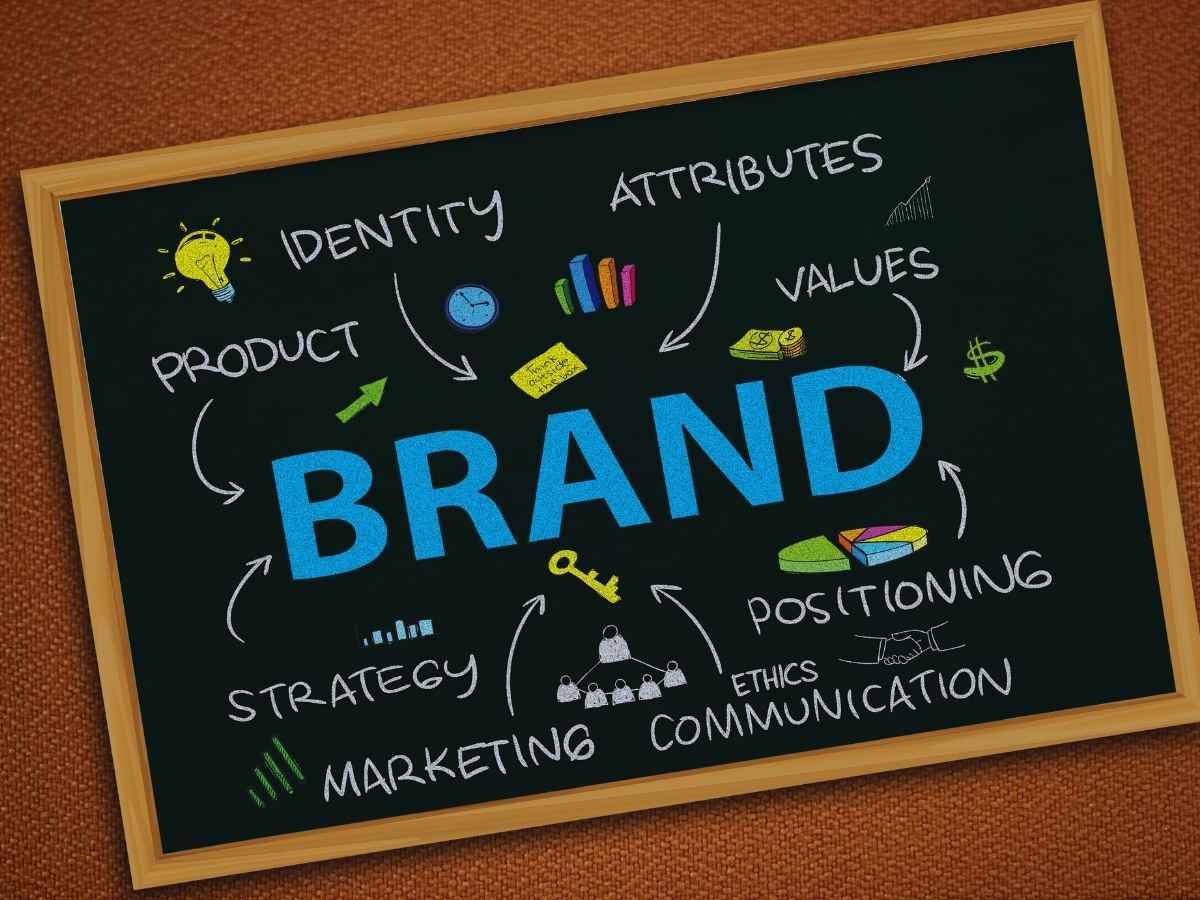A signature brand color can also increase recognition by 80%. You see, that’s the power behind brand identity. Some businesses today operate in very crowded marketplaces and the attention span has become very short, and that first impression does count. A powerful brand identity is more than a logo or a catchphrase. It’s your business’s core and the key to help you stand out, build trust, and drive long-term success.
This guide delves into the significance of a brand identity, what it is and gives practical advice for businesses of any size to build and maintain one that stands out. Whether you’re a start-up with your first product or an established company with a need to refresh, here’s everything you need to know in being on-trend.
Understanding Brand Identity
What is Brand Identity?
Brand identity is everything visual, emotional and messaging that makes up the way your business is perceived. It’s the way your business looks, feels and talks to the world. Fundamental elements of a brand identity are:
- Visual Design: Logos, color palettes, fonts and design style that captures the personality of your brand.
- Messaging: The way that you reach out to your audiene� should express the philosophy and purpose of your audience’s work.
- Overall Perception: General sentiment that customers have toward your brand and how it stands out in the market.
For instance, brands such as Apple are synonymous with polished innovation and Coca-Cola is associated with happiness and connection. Brand Identity Both brand’s have strong brand identity and communicate their message very consistently.
Why Brand Identity Matters for Your Business
And, due to the fact that a strong brand identity creates brand consistency, helps people recognise who you are and trust your brand. Companies that have a strong, unified brand identity are more likely to identify success because it’s easier for the customer to relate to and remember them.
- Customer Trust: Uniform appearance and content across all customer touchpoints convey dependability and authority.
- Competitive Advantage: Companies with a compelling brand identity are more able to stand out in a crowded marketplace.
Research shows that 73% of consumers say they’re more likely to believe a brand that delivers consistent, on-brand experiences. That trust, truly, turns into loyalty and repeat business.

Building a Strong Brand Identity from Scratch
How to Build a Brand Identity
Constructing a solid brand identity takes time, but it pays to follow a step by step plan and make a first impression that lasts. Here’s how you can begin developing a business brand strategy that works:
- Know Your Audience: Learn who your target audience is and what they are looking for. This will inform every decision about the look and feel of your brand.
- Define Your Mission and Values: It’s important to know what your business represents and what sets you apart from others.
- Choose a Visual Identity:
- Create an impressive logo that promotes your brand.
- Pick one distinct colour scheme, and a typeface that represents the image of your brand.
- Create an impressive logo that promotes your brand.
- Develop Messaging:
- Develop a voice that is consistent and personal to your brand.
- Flaw and reformulate your tagline and motto to include a consumer impact.
- Develop a voice that is consistent and personal to your brand.
Practical Tips for Brand Building
- Tell Your Story:
Every great brand has an origin story. Share what motivated the founding of your business and the “why” behind your work.
- Be Unique:
Don’t be bland Strong brands are attractive by being the opposite, by being different in the market place in terms of quality, experience or values.
- Conduct Market Research:
Look at competitors to see where your brand has a turning point from the market. One way to accomplish this is through brand positioning, in which you create a little space in your audience’s mind.
The Role of Consistency in Brand Identity
Why Consistency is Key
Creating a brand identity is just one piece of the puzzle. The hard part is keeping it going through all channels and interactions. Your business should be recognizable to customers whether they encounter an ad on Instagram, visit your website or walk into a store.
Consistency ensures:
- Brand Recognition: The familiar brings trust, and keeps your brand top of mind.
- Customer Loyalty: The more your customers feel connected to and know your brand, the more loyal they are to the brand.
Real-Life Examples
- Apple keeps its iconic pale-and-minimalist aesthetic throughout its products and stores and ads.
- Coca-Cola has a knack for making people happy and nostalgic, and it’s no surprise it has been bringing uplifting and yes, happiness-inspiring messaging to life in its signature color for decades!
Both are examples of how one does not underestimate the power of consistency in developing an emotionally bonding identity over time.

Business Branding Strategies for Long-Term Growth
Effective Brand Strategies
For long-term business success, you need a purposeful approach to branding that grows with your organization. Examples include:
- Customer-Centric Branding:
- Leverage customer feedback to help improve your messaging and visuals.
- Make sure your brand shares the same values as customers for more meaningful relationships.
- Leverage customer feedback to help improve your messaging and visuals.
- Market Adaptation:
- Stay ahead of trends. Leverage data to anticipate market changes and maintain brand positioning.
- Emotionally Driven Marketing:
- Storytelling with emotion strikes a chord. The campaigns that do the best are the ones that speak to customer hopes and dreams.
Brand Positioning for Business Growth
At its core, brand positioning is defining where your brand falls among your competition. You need to emphasize what specific value you provide better than anyone else. If you’re a sustainable fashion brand, for example, your angle might be environmentally friendly practices and timeless style.
Why Startups Need a Strong Brand Identity
Branding: For startups, it’s not just about good looks. It’s survival in hyper-competitive industries. Brand associations can be important because: 1) High initial brand identity helps startups:
- Establish Credibility:
Startups with a professional brand are seen as professional and trustworthy by customers.
- Create Brand Recall:
Early awareness means that when a customer has a need for your product or service in the future, they’ll think of you first.
A lot of start-ups have a hard time pinning daown their image. Begin by honing in on your USPs and adopting a clear, consistent brand identity.
The Benefits of a Strong Brand Identity
Your brand is woven through every part of your business – retention rate, name, the money in the door. Here’s how:
- Customer Loyalty:
A unified brand experience helps to build loyalty among your users.
- Premium Pricing:
Customers will pay a premium for brands they see having some value.
- Enhanced Recognition:
Visual and tonal consistency means better recall and advocacy.

Inspiring Brand Identity Case Studies
- Nike:
Nike’s ‘Just Do It’ and powerful visual identity motivate people to get off the couch and excel in their sport. Its dedication towards inspiring narratives makes it emotionally resonate among its customers.
- Tesla:
Tesla fuses modern design with earth-friendly technology, and through this process has managed to maintain a stranglehold on the electric car market by gaining a loyal customer base.
All of those brands have achieved success that comes from a brand with distinct values that it executes well and re-messaging.
Creating a Unique Brand Identity Today
The strength of a good brand identity cannot be emphasized enough. Whatever the need, from generating trust and awareness, to driving customer loyalty and sales, it’s an essential ingredient to business success that is here to stay.
If you’re in the beginning stages of developing a brand, or are simply in need to refine what your brand is today, the time to act is now. Concentrate on preparing your value proposition, being consistent, and establishing an emotional bond with your blooming audience. Because investing in your brand’s identity is not just a strategy, it’s your long-term ticket to growth.





